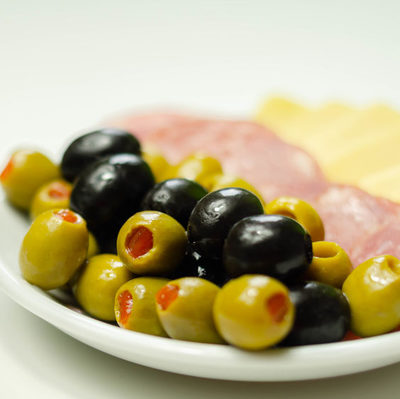
Olive
What is an Olive?
Olives are the edible fruit of the olive tree (Olea europaea) and belong to the drupes group of fruits. These fruits are also called stone fruits and include almond, pistachio, cherry, and mango.
- Olives are grown throughout the Mediterranean region, as well as in Australia & New Zealand, United States, South America, and South Africa.
- Worldwide, 19,270,115 tons of olives are produced every year, with Spain, Greece, and Italy topping the list.
There are many different varieties of olives, including:
- Kalamata
- Castelvetrano
- Cerignola
- Nyon
- Niçoise
- Liguria
- Gaeta
- Picholine
- Gordal
- Alfonso
- Mission
- Manzanilla
- Beldi
- Amfissa
Olive origin
The olive tree has been growing in the Mediterranean region for millions of years. Olives have been one of the first trees to be domesticated since the advent of agriculture. Evidence of olive cutting in order to grow the trees have been found in Ancient Rome and Ancient Greece. They gradually spread towards the East through Syria, Palestine, Israel, and Morocco. Eventually, they were brought to the Americas by Christian missionaries.
Commercial production
Olives cannot be consumed raw since they contain a polyphenolic compound called oleuropin, which makes it extremely bitter. Hence, they must be cured, converting the olives natural sugars into lactic acid. Over 70% of ripe olives are produced in California.
Olives are often harvested by hand, with sheets of plastic placed under the trees. Harvesters rake the fruit from the trees with long-handled rakes. However, machine harvesting has now made an appearance. The olives are cleaned and then cured. There are five different ways to commercially cure olives:
- Brine-curing: Brine-curing makes for the most delicious olives and takes up to a year.
- Water-curing: This method involves soaking olives in water several times.
- Dry-curing: This method involves packing olives in salt for a period of one month or more to leech off the moisture and bitterness.
- Lye-curing: Most common method, lye-curing involves immersing olives in alkaline lye solution. However, this reduces the taste of the olives. This process causes natural phenolic compounds in the olives to oxidize. Components such as calcium chloride salts, iron salts, and compressed air help in developing the black color that are then sold as black olives.
- Sun-curing: Some olives are left to cure either on the tree or in the sun for long periods.
After curing, the olives are cleaned and sorted. Sometimes, they are pitted and stuffed and finally packaged, ready for distribution.
Nutrition
A 100 g serving of ripe, canned black olives contain:

Olives contain around 80% fat in the form of oleic acid, that keeps the cholesterol and blood pressure in check. Olives are a good source of dietary fiber, which is important for good gut health. They are also rich in antioxidants in the form of phytonutrients as well as vitamin E, selenium, and zinc. The phytonutrients in olives can prevent oxidative stress in the form of cancer, cardiovascular diseases, metabolic disorders, and inflammation.
Olive recipes
Olives are versatile and can be used in a number of recipes. Here are a few recipes that can be made using olives.
- Olive Bread
- Fried Stuffed Olives
- Olive Linguine
- Parsley and Olive Canapes
- Herb Roasted Olives & Tomatoes
- Grain Salad
- Olive Oil Dip
FDA regulations
The FDA regulates the production of olives and includes it in the pickles and relishes category. According to the Code of Federal Regulations, olives are the fruit of any variety of olea europaea, irrespective of its origin or its processing status. However, it is the USDA which regulates the import of olives from other countries into the US and strictly regulates the inspection and certification of such imported olives.
References
Hannah Howard, A Beginner’s Guide to Olives: 14 Varieties Worth Seeking Out, Serious Eats
https://www.seriouseats.com/2014/09/guide-to-olive-varieties.html
Olives by Ioannis Nikolaos Therios
Gouvinhas, Irene et al. “Critical Review on the Significance of Olive Phytochemicals in Plant Physiology and Human Health.” Molecules (Basel, Switzerland) vol. 22,11 1986. 16 Nov. 2017, doi:10.3390/molecules22111986
https://www.ncbi.nlm.nih.gov/pmc/articles/PMC6150410/
